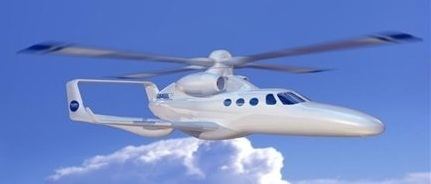 | ||
The GBA-DARPA Heliplane is a proof-of-concept, long-range, vertical takeoff and landing aircraft intended to cruise at twice the speed of conventional helicopters. It is being funded by the Defense Advanced Research Projects Agency (DARPA) and designed by Groen Brothers Aviation (GBA).
DARPA’s objective is to achieve performance with a rotary-wing aircraft comparable to that of a fixed-wing plane. The concept combines technical aspects of a gyroplane, which GBA has been working on since the late 1980s, with a fixed-wing business jet.
The work is part of a multi-year, $40-million, four-phase program. GBA, along with Georgia Tech, Adams Aircraft Industries, and Williams International, worked on Phase 1 of that program, a 15-month effort funded at $6.4 million. Phase 1B of the program will be managed by Georgia Tech, using GBA as a subcontractor. Phase 2 development includes a "subscale wind tunnel demonstration in the high-speed, high-altitude wind tunnel at NASA Langley and the building of a full-scale tipjet nozzle. Phase 2 is anticipated to be a substantially bigger undertaking (valued at $24-28 million)."
General characteristics Performance
